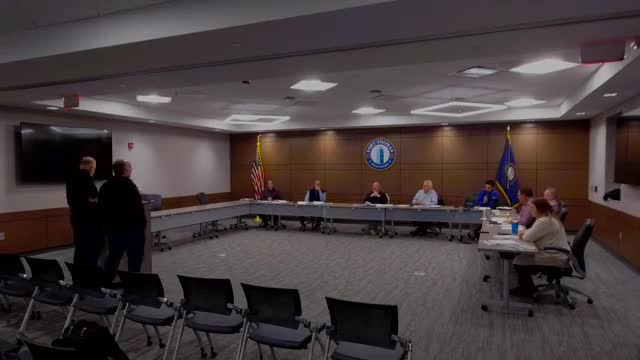Local council discusses fate of historic buildings amid demolition concerns
November 21, 2024 | Fort Thomas, Campbell County, Kentucky
This article was created by AI summarizing key points discussed. AI makes mistakes, so for full details and context, please refer to the video of the full meeting. Please report any errors so we can fix them. Report an error »

During the recent Design Review Board meeting held on November 21, 2024, in Fort Thomas, Kentucky, city officials and community members engaged in a robust discussion regarding the future of several historic buildings in the area. The meeting highlighted the complexities surrounding the preservation of these structures, particularly in light of a recent structural insurance report that raised concerns about the condition of some properties.
A key point of contention was the classification of certain buildings as "non-contributing" to the historic district, despite their proximity to significant structures. Participants expressed frustration over the criteria used to determine which buildings contribute to the district's historical value. One member noted that even well-known local businesses, such as a furniture store, were deemed non-contributing, raising questions about the criteria's fairness and consistency.
The discussion also touched on the implications of potential demolitions. Several board members emphasized the importance of repairing rather than demolishing buildings, referencing the structural report that recommended repairs to compromised framing instead of outright demolition. This recommendation sparked debate about the board's responsibility to support local businesses while ensuring the preservation of the community's historical integrity.
As the meeting progressed, concerns were voiced about the time and resources already invested in the preservation efforts. One participant expressed a desire to avoid being labeled as the "bad guy" in the community, highlighting the emotional weight of decisions that could impact local heritage and business viability.
The meeting concluded with a recognition of the need for further evidence and discussion before making any final decisions regarding the future of the buildings in question. The board's commitment to balancing historical preservation with community interests remains a central theme as Fort Thomas navigates these complex issues. The next steps will likely involve continued dialogue among stakeholders to ensure that both the historical and economic aspects of the community are thoughtfully considered.
A key point of contention was the classification of certain buildings as "non-contributing" to the historic district, despite their proximity to significant structures. Participants expressed frustration over the criteria used to determine which buildings contribute to the district's historical value. One member noted that even well-known local businesses, such as a furniture store, were deemed non-contributing, raising questions about the criteria's fairness and consistency.
The discussion also touched on the implications of potential demolitions. Several board members emphasized the importance of repairing rather than demolishing buildings, referencing the structural report that recommended repairs to compromised framing instead of outright demolition. This recommendation sparked debate about the board's responsibility to support local businesses while ensuring the preservation of the community's historical integrity.
As the meeting progressed, concerns were voiced about the time and resources already invested in the preservation efforts. One participant expressed a desire to avoid being labeled as the "bad guy" in the community, highlighting the emotional weight of decisions that could impact local heritage and business viability.
The meeting concluded with a recognition of the need for further evidence and discussion before making any final decisions regarding the future of the buildings in question. The board's commitment to balancing historical preservation with community interests remains a central theme as Fort Thomas navigates these complex issues. The next steps will likely involve continued dialogue among stakeholders to ensure that both the historical and economic aspects of the community are thoughtfully considered.
View full meeting
This article is based on a recent meeting—watch the full video and explore the complete transcript for deeper insights into the discussion.
View full meeting
